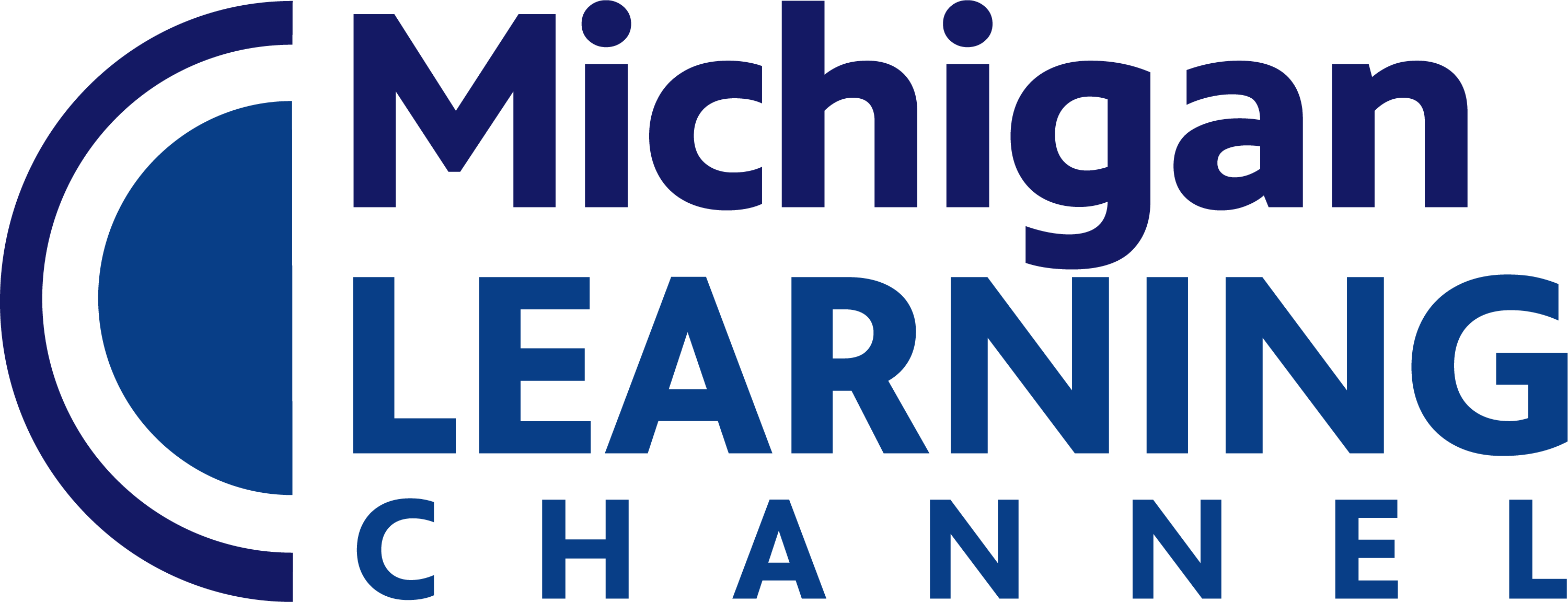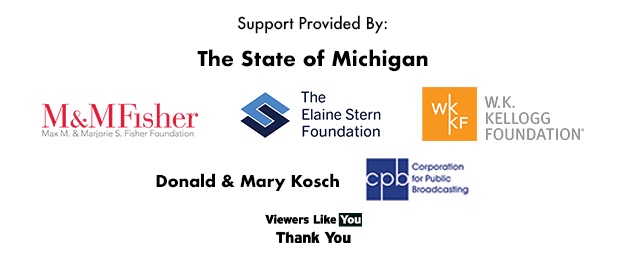Subjects
Shows
Analyze the historical and philosophical origins of American Constitutional Democracy and analyze the influence of ideas found in the Magna [...]
Increasing Global Interconnections – describe the increasing global interconnections and new global networks that resulted in the spread of major [...]
Comparing Political Revolutions and/or Independence Movements – compare and contrast the American Revolution, the French Revolution, and one other revolution [...]
Growth of Nationalism and Nation-States – compare and contrast the rise of nation-states in a western and non-western context.
Industrialization – compare and contrast the causes and consequences of industrialization around the world, including social, economic, and environmental impacts.
Imperialism – analyze the political, economic, and social causes and consequences of imperialism in different regions.
Power and Resistance – describe the global reconfigurations and restructuring of political and economic relationships throughout the 20th century and [...]
Global Conflict – compare and contrast the nature, extent, and impact of modern warfare with warfare in the previous eras, [...]
Genocide in the 20th Century – differentiate genocide from other atrocities and forms of mass killing and explain its extent, [...]
Technological, Scientific, and Cultural Exchanges – describe significant technological innovations and scientific breakthroughs in transportation, communication, medicine, and warfare and [...]
World War I – explain the causes, characteristics, and long-term consequences of World War I, including the major decisions of [...]
Interwar Period – analyze the transformations that shaped world societies between World War I and World War II, including the [...]
World War II – analyze the causes, course, characteristics, and consequences of World War II, including the emergence the United [...]
Cold War Conflicts – analyze the causes and consequences of major Cold War conflicts, including the global reconfigurations and restructuring [...]
Revolution, Decolonization, and Democratization – evaluate the causes and consequences of revolutionary and independence movements in different world regions.
Case Studies of Genocide – analyze the development, enactment, and consequences of, as well as the international community's responses to, [...]
Using the American Revolution, the creation and adoption of the Constitution, and the Civil War as touchstones, develop and argument [...]
Analyze how the changing character of American political society from 1791 to 1877 significant impact on the responsibilities of governments [...]
Labor’s Response to Industrial Growth – evaluate the different responses of labor to industrial change, including the development of organized [...]
Describe the extent to which industrialization and urbanization between 1895 and 1930 created the need for progressive reform.
Analyze the social, political, economic, and cultural changes that occurred during the Progressive Era.
Growth and Interactions of World Religions – analyze the significance of the growth of and interactions between world religions.
Intensifying Trade Networks and Contacts – compare and contrast the development, interdependence, specialization, and importance of interregional land-based and sea-based [...]
Growth of Islam and Dar al-Islam (a country, territory, land, or abode where Muslim sovereignty prevails) - explain the significance [...]
Unification of Eurasia under the Mongols – analyze the significance of Mongol rule in Afro-Eurasia and the impact of the [...]
Spheres of Interaction and Influence in the Americas – compare and contrast the diverse characteristics and interactions of peoples in [...]
Emerging Global System – differentiate between the global systems of trade, migration, and political power from those in the previous [...]
Diffusion of World Religions – evaluate the impact of the diffusion of world religions and belief systems on social, political, [...]
Cultural Encounters and the Columbian Exchange – explain the demographic, environmental, and political consequences of European oceanic travel and conquest.
The Trans-Atlantic Slave Trade – analyze the causes and development of the Atlantic trade system with respect to the capture [...]
Afro-Eurasian Empires – compare and contrast the different ways governments expanded or centralized control across various parts of Afro-Eurasia, and [...]
Global Revolutions – explain the characteristics, extent, and impact of the global revolutions, including but not limited to changes in [...]
Worldwide Migrations and Population Changes – analyze the causes and consequences of shifts in world population and major patterns of [...]
Understand artistic knowledge as an important tool for successful living in the 21st century. (21st Century Skills: II.1, II.5, III.7)
Analyze the impact of visual culture on society. (21st Century Skills: I.3, III.2, III.7)
Identify the role visual arts play in enhancing civic responsibility and community. (21st Century Skills: I.3, I.6, III.2, III.4, III.7, [...]
Apply organizational principles and methods to create innovative works of art and design products. (21st Century Skills: I.1, I.2, III.3)
Apply knowledge and skill to symbolize the essence of an idea. (21st Century Skills: I.1, I.6)
Reflect, articulate, and edit the development of artwork throughout the creative process. (21st Century Skills: I.4, II.7, III.3, III.4)
Use emergent technologies and materials to create artistic products that demonstrate knowledge of context, values, and aesthetics. (21st Century Skills: [...]
Create collaboratively to resolve visual problems. (21st Century Skills: I.1, I.4, I.5, III.1)
Explore social and global issues through the application of the creative process. (21st Century Skills: III.7, III.8, III.9, III.10)
Analyze and describe the formal characteristics of a work of art or design. (21st Century Skills: I.3, II.1, III.1)
Describe how organizational principles are used to elicit emotional responses. (21st Century Skills: I.3, II.1, III.1)
Critically observe a work of art to evaluate and respond to the artist’s intent using art vocabulary and terminology. (21st [...]
Evaluate the quality and effectiveness of one’s artwork. (21st Century Skills: I.3, II.1, III.4)
Recognize and understand the relationships between personal experiences and the development of artwork. (21st Century Skills: I.3)
Observe and describe artwork with respect to history and culture. (21st Century Skills: I.6, II.1, III.1, III.2, III.7, III.8, III.9, [...]
Describe the functions and explore the meaning of specific art objects within varied cultures, times, and places. (21ST Century Skills: [...]
Analyze the correlation between art, history, and culture throughout time. (21st Century Skills: I.6, III.1, III.2, III.7, III.8, III.9, III.10)
Subjects
Shows
Analyze the historical and philosophical origins of American Constitutional Democracy and analyze the influence of ideas found in the Magna [...]
Increasing Global Interconnections – describe the increasing global interconnections and new global networks that resulted in the spread of major [...]
Comparing Political Revolutions and/or Independence Movements – compare and contrast the American Revolution, the French Revolution, and one other revolution [...]
Growth of Nationalism and Nation-States – compare and contrast the rise of nation-states in a western and non-western context.
Industrialization – compare and contrast the causes and consequences of industrialization around the world, including social, economic, and environmental impacts.
Imperialism – analyze the political, economic, and social causes and consequences of imperialism in different regions.
Power and Resistance – describe the global reconfigurations and restructuring of political and economic relationships throughout the 20th century and [...]
Global Conflict – compare and contrast the nature, extent, and impact of modern warfare with warfare in the previous eras, [...]
Genocide in the 20th Century – differentiate genocide from other atrocities and forms of mass killing and explain its extent, [...]
Technological, Scientific, and Cultural Exchanges – describe significant technological innovations and scientific breakthroughs in transportation, communication, medicine, and warfare and [...]
World War I – explain the causes, characteristics, and long-term consequences of World War I, including the major decisions of [...]
Interwar Period – analyze the transformations that shaped world societies between World War I and World War II, including the [...]
World War II – analyze the causes, course, characteristics, and consequences of World War II, including the emergence the United [...]
Cold War Conflicts – analyze the causes and consequences of major Cold War conflicts, including the global reconfigurations and restructuring [...]
Revolution, Decolonization, and Democratization – evaluate the causes and consequences of revolutionary and independence movements in different world regions.
Case Studies of Genocide – analyze the development, enactment, and consequences of, as well as the international community's responses to, [...]
Using the American Revolution, the creation and adoption of the Constitution, and the Civil War as touchstones, develop and argument [...]
Analyze how the changing character of American political society from 1791 to 1877 significant impact on the responsibilities of governments [...]
Labor’s Response to Industrial Growth – evaluate the different responses of labor to industrial change, including the development of organized [...]
Describe the extent to which industrialization and urbanization between 1895 and 1930 created the need for progressive reform.
Analyze the social, political, economic, and cultural changes that occurred during the Progressive Era.
Growth and Interactions of World Religions – analyze the significance of the growth of and interactions between world religions.
Intensifying Trade Networks and Contacts – compare and contrast the development, interdependence, specialization, and importance of interregional land-based and sea-based [...]
Growth of Islam and Dar al-Islam (a country, territory, land, or abode where Muslim sovereignty prevails) - explain the significance [...]
Unification of Eurasia under the Mongols – analyze the significance of Mongol rule in Afro-Eurasia and the impact of the [...]
Spheres of Interaction and Influence in the Americas – compare and contrast the diverse characteristics and interactions of peoples in [...]
Emerging Global System – differentiate between the global systems of trade, migration, and political power from those in the previous [...]
Diffusion of World Religions – evaluate the impact of the diffusion of world religions and belief systems on social, political, [...]
Cultural Encounters and the Columbian Exchange – explain the demographic, environmental, and political consequences of European oceanic travel and conquest.
The Trans-Atlantic Slave Trade – analyze the causes and development of the Atlantic trade system with respect to the capture [...]
Afro-Eurasian Empires – compare and contrast the different ways governments expanded or centralized control across various parts of Afro-Eurasia, and [...]
Global Revolutions – explain the characteristics, extent, and impact of the global revolutions, including but not limited to changes in [...]
Worldwide Migrations and Population Changes – analyze the causes and consequences of shifts in world population and major patterns of [...]
Understand artistic knowledge as an important tool for successful living in the 21st century. (21st Century Skills: II.1, II.5, III.7)
Analyze the impact of visual culture on society. (21st Century Skills: I.3, III.2, III.7)
Identify the role visual arts play in enhancing civic responsibility and community. (21st Century Skills: I.3, I.6, III.2, III.4, III.7, [...]
Apply organizational principles and methods to create innovative works of art and design products. (21st Century Skills: I.1, I.2, III.3)
Apply knowledge and skill to symbolize the essence of an idea. (21st Century Skills: I.1, I.6)
Reflect, articulate, and edit the development of artwork throughout the creative process. (21st Century Skills: I.4, II.7, III.3, III.4)
Use emergent technologies and materials to create artistic products that demonstrate knowledge of context, values, and aesthetics. (21st Century Skills: [...]
Create collaboratively to resolve visual problems. (21st Century Skills: I.1, I.4, I.5, III.1)
Explore social and global issues through the application of the creative process. (21st Century Skills: III.7, III.8, III.9, III.10)
Analyze and describe the formal characteristics of a work of art or design. (21st Century Skills: I.3, II.1, III.1)
Describe how organizational principles are used to elicit emotional responses. (21st Century Skills: I.3, II.1, III.1)
Critically observe a work of art to evaluate and respond to the artist’s intent using art vocabulary and terminology. (21st [...]
Evaluate the quality and effectiveness of one’s artwork. (21st Century Skills: I.3, II.1, III.4)
Recognize and understand the relationships between personal experiences and the development of artwork. (21st Century Skills: I.3)
Observe and describe artwork with respect to history and culture. (21st Century Skills: I.6, II.1, III.1, III.2, III.7, III.8, III.9, [...]
Describe the functions and explore the meaning of specific art objects within varied cultures, times, and places. (21ST Century Skills: [...]
Analyze the correlation between art, history, and culture throughout time. (21st Century Skills: I.6, III.1, III.2, III.7, III.8, III.9, III.10)


